Salient Research Achievements
|
Characterization, conservation and genetic improvement of indigenous livestock and poultry as a suitable germplasm for the island ecosystem
|
The farm animal genetic resources (FAnGR) of these Islands is comprises of indigenous cattle, buffalo, goat, pig and poultry with varying population in different Islands. The division has done in-depth study to characterize all the indigenous farm animal germplasm of this islands with their unique phenotypic characteristics of adaptability and production sustainability under island ecosystem. For the first time molecular characterization of all the germplasm has been completed and three indigenous germplasm have been registered as new breeds from this islands viz. Nicobari fowl, Nicobari pig and Teressa goat. Genbank sequence number and Gazette of India notification number of all the germplasm is given below
|
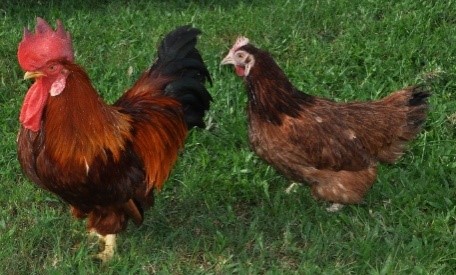
Nicobari fowl Acc No INDIA_CHICKEN_3300_NICOBARI_12013
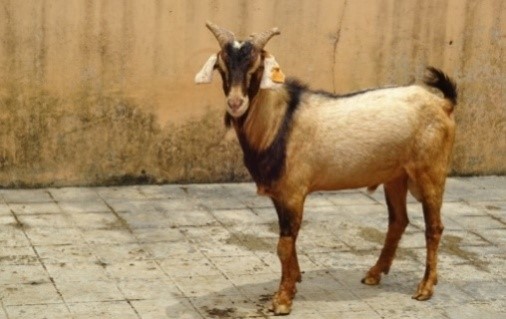
Teressa Goat Acc No Acc No. INDIA_GOAT_3300_TERESSA_06025
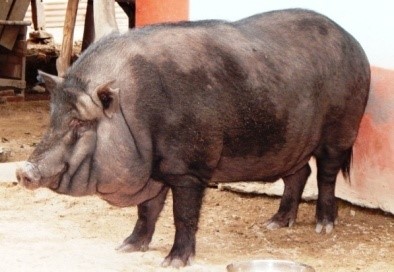
Nicobari pig AccNo. INDIA_PIG_ 3300_NICOBARI_09005
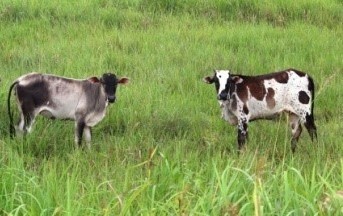
Trinket cattle GenbankAcc No MK335920

Andaman cattle GenbankAcc NoMK872811-MK872960
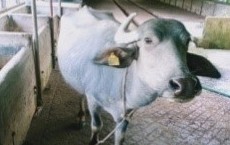
Andaman buffalo Genbank Acc NoMK234704
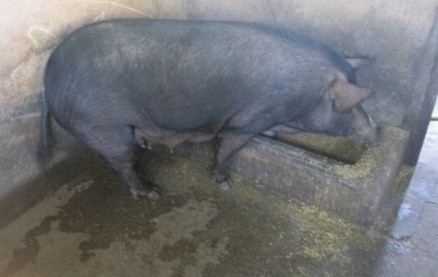
Andaman pig GenbankAcc NoMK248682

Andaman duck GenbankAcc NoMK854486-MK854556
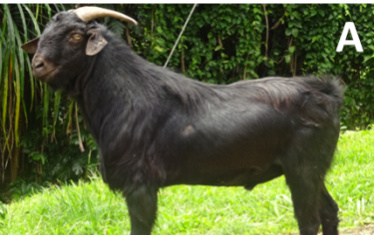
Andaman local goat GenbankAcc No MK234706
|
Molecular characterization of Andaman Cattle
|
We have studied the population genetic structure and genetic diversity of Andaman cattle using mitochondrial DNA D-loop as an effective marker. Sequences revealed 64 polymorphic or variable sites including 63 parsimony informative sites and one singleton variable site.. The results of the study indicated that Andaman cattle originated from zebu cattle and presence of T haplogroup though at low frequency indicated taurine gene introgression. In Andaman and Nicobar Islands, female animals of taurine breeds (Jersey, Holstein Friesian) were imported for genetic improvement of Andaman cattle by cross breeding programme. That might be the reason behind presence of T haplogroup in Andaman cattle.
|
Unravelling the mystery of origin of Trinket Cattle an endangered cattle of A & N Islands
|
Trinket cattle are inhabitant of a small island, Trinket, one of the picturesque islands of Andaman. The herd of cattle are thought to be Danish leftover during their dynasty in Nicobar archipelago. When the island was abandoned by foreign invaders, indigenes utilized the animals for meat purpose. As a result, the cattle became semi feral in nature. After the Great Sumatra earthquake and Indian Ocean Tsunami in 2004, Trinket Island was left abandoned by indigenes and the cattle became totally feral in nature. To trace the genetic root of the cattle, the study has been undertaken based on sequence information of mitochondrial D loop and cytochrome b gene. Mitochondrial sequence analysis revealed that Trinket cattle could be clustered not only with I2 haplotype (AB268559, EU177870) but shared the same cluster with Red Sindhi cattle (HQ234730). Analysis of sequence information revealed that Trinket cattle belong to Bosindicus (I) haplotype, sub-haplotype I2. This is a novel input for formulation of breeding strategy towards conservation of eco-friendly sustainable livestock in the isolated island ecosystem.
|
Origin, evolution and genetic diversity of Andaman Local Duck
|
Andaman local duck (ALD) is an indigenous avian genetic resource of Andaman and Nicobar islands (ANI) and is mainly distributed in Middle and Northern parts of these islands. Negligence has brought this breed on the edge of extinction necessitating immediate conservation efforts. Here, we report the genetic diversity, population structure and matrilineal genetic root of ALD. Partial mtDNA D-loop sequences analysis revealed 19 polymorphic sites and 13 haplotypes. Phylogenetic and network analysis indicate that ALD falls under Eurasian clade of mallard and ALD forms three clusters; one cluster is phylogenetically close to Southeast Asian countries, one close to Southern part of mainland India and the third one forms independent cluster.
|
Molecular characterization and phylogeography of Nicobari fowl.
|
Nicobari fowl is an indigenous precious poultry germplasm of Andaman and Nicobar islands. It is the highest egg producer among desi poultry birds of India. Mitochondrial D loop analysis was done to identify haplogroups of Nicobari chicken native to Andaman & Nicobar Islands. Analysis revealed a total of 26 haplotypes and the nucleotide diversity range from 0.00476 – 0.00633 in different populations of Nicobari fowl. The haplogroups A, B, E1, E2, F & I are found in the Nicobari fowl populations studied and the major haplogroups are A with 17%, B with 19%, E1 with 52% and E2 with 8% of the total 105 samples. The haplogroups F and I are present only in brown Nicobari fowl but absent in black and white Nicobari fowl population.
|
Next Generation Sequencing (NGS) based Mitogenome analysis of indigenous livestock breeds of Andaman and Nicobar islands
|
Mitogenome analysis has emerged as an important tool in many research areas such as studying population genetics, evolutionary relationships, phylogenetic relationships and phylogeography. Additionally, whole mtDNA genome sequencing has improved the resolution of phylogenetic analysis compared with single gene or single region studies. For the first time whole mitochondrial genome of indigenous animal germplasm of Andaman and Nicobar islands has been sequenced and deposited to GenBank. This work will help to understand the genetic structure, phylogeography and phylogenetic relationship of the breeds with other livestock breeds elsewhere and ultimately aid in designing of conservation strategy of the livestock breeds.
|
Name of the species
|
GenBank Accession Number
|
Nicobari Pig
|
MK248681
|
Andaman Desi Pig
|
MK248682
|
Teressa Goat
|
MK234705
|
Andaman Local Goat
|
MK234706
|
Trinket cattle
|
MK335920
|
Andaman Buffalo
|
MK234704
|
|
|
Resolving the mystery of origin of Andaman local goat and Teressa goat
|
To resolve the mystery of genetic root of Andaman local goat and Teressa goat the study has been planned on the basis of analysis of D–loop sequence. This is the first insight into the genetic history of Andaman goats and their comparison with goat sequences reported elsewhere. Within 137 sequence information of Andaman local goat, a total of 89 polymorphic sites and 77 parsimony informative sites were found. Out of 48 sequence information of Teressa goat, 53 polymorphic and parsimony sites were detected. Nucleotide diversity (Pi) of Andaman local goat and Teressa goat was 0.01865±0.00093 and 0.01882 ± 0.00104, respectively. On the basis of the analysis this was found that, 29 haplotypes belonged to haplogroup A, eight haplotypes belonged to haplogroup B and one haplotype belonged to haplogroup D. Our observation on phylogeographical signaling indicated that, Andaman local goat and Teressa goat had genetic affinity with domestic goats reared in Southern Asia and Eastern Asia of different geographical locations.
|
Estimation of genetic diversity among Teressa goat population by microsatellite markers
|
The Teressa goats which has been recognized as the goat breed from this islands are native to the Nicobar group of islands and reared by the Nicobari tribes. Genetic diversity among the Teressa goat population was done by using microsatellite molecular marker. Teressa goat is an indigenous goat breed of A & N Islands. The present study was undertaken to study the genetic characterization of the Teressa goat by using microsatellite markers. A total of 50 genotypes were observed across the 15 loci. The number of genotype varied between (MAF70; SRCRSP3) 1 and 6 (SRCRSP15). The effective number of alleles (Ne) varied from 2 to 6.98. All the values of FIS obtained were negative which is suggestive of no inbreeding within the populations and the animals were outbred. The mode-shift test indicated the genetic bottleneck in Teressa and needs greater attention towards in situ/ex situ conservation. The information elucidated through the present study would be useful for the formulation of effective conservation strategies for sustainable maintenance and identification of quantitative trait loci for marker-assisted selection.
|
Morphometric characterization of Andaman local goat
|
Andaman Local Goats (ALG) is an indigenous goat of this islands and are usually reared by the settlers under extensive/semi intensive system. Studies on phenotypic characters, feeding and management system and population status in the Andaman and Nicobar Islands was done. It was revealed that these goats are mainly distributed in the Andaman Islands and medium to short stature with colour combination of black, brown and white. Ears are flat and leaf-like, medium-sized and drooping. Both sexes have small horns, curved upward and backward. Tail is medium in length and curved upward. They are preferred for its excellent chevon quality and black colour is mostly preferred by the people for religious functions. Age at first mating, weight at first mating, age at first kidding, weight at first kidding, service period, kidding interval and gestation period was 260 ±15.0 days, 8.49±0.89 kg, 420.0 ±12.0 days, 13.26±1.61kg, 101.20±11.23 days, 300.0 ± 20.0 days and 147.0± 2.0 days respectively From the study results it is concluded that Andaman Local goat is a precious germplams of the A & N Islands, and efforts for conservation of the indigenous breed should be strengthened by the CIARI and local Animal Husbandry Department.
|
Reproductive and Production Performance of Andaman Local Pig
|
Andaman local pig (ALP) is available in Andaman and Nicobar Islands (ANI), associated with socio-economic of tribal population. ALP is semi-feral, reared in free-range system with low management. Higher body weights were observed from month 1 to 9 under intensive system in male than in female pigs. The rate of body weight growth in different months revealed that the rate between first and second months was 37.10% and this rate has been increased from second to fifth months (15.39, 17.79 and 22.81%, respectively) and then decreased from fifth to ninth months (13.42, 12.45, 2.87 and 3.14%, respectively) in male pigs. Similar trend was also observed in female pigs as 37.39, 15.96, 18.28, 21.18, 16.56, 9.93, 4.09 and 1.64%, respectively from month 1 to 9. In overall, the male was carrying significantly higher body weight than the female pig (52.12 vs 47.87%) with average body weight of 46.18 and 42.66 kg, respectively for male and female pigs.
|
Reproductive and production performance of Nicobari pig
|
Nicobari pig is semi-feral, reared in free-range system with very low level of management. A systematic comparison study was conducted between intensive and free-range system on growth and reproductive parameters. Higher body weights at months 3, 6, 9 and 12 were recorded under intensive than in free-range system in male and female pigs and in male than in female. It was concluded that growth and reproductive performances of Nicobari pigs reared under intensive system has significantly higher beneficial than in free-range system.
|
Productivity enhancement of Andaman local goat
|
With an aim to enhance the productivity, a holistic approach was undertaken with scientific breeding, housing, feeding, health care, and reproductive management in the adopted cluster. With our project intervention, so far 2311, 1377 and 726 goats have been registered under adopted clusters viz. Port Blair, Baratang and Nimbudera respectively. A total of 338 farmers have been registered in 51 villages comprising of 4414 goats. All the farmers are getting direct benefit through increase in income generation and thereby getting livelihood security. Before intervention of the project farmers used to sell the goats based on the size, however, now the farmers are selling the goats based on the actual body weight and getting the actual price and more benefit. Within a span of last five years, the project has created a significant impact in terms of response and registration of farmers with the projects. Through this project our team has contributed significantly towards the livelihood security through the technological intervention viz. increase in body weight at 12 month (5.49%), reduction in mortality (from 10.06 to 4.74%), increase in kidding rate (7.59%), weight at first kidding (22.78 %), increase in net income (75.24 %), increase in preventive health coverage (167.39%), increase in knowledge of scientific breeding, management and health practices.
|
Technology for low cost designer egg with rich carotenoid pigment
|
In our study we produced the carotenoid enriched desi eggs through designer egg technology. Marigold petals were collected and dried. The dried petals were supplemented in feed @ 3 g per hen per day for rural poultry. This supplementation caused increase in rich yolk colour score from 7 to 10 that could be well correlated with concentration of carotenoid pigments present in the egg yolk. This enrichment again enhanced the demand for desi eggs. Further, the effect of potential antioxidant property of incremental carotenoid pigments present in the egg yolk improved the hatchability by 10 per cent. The increase in demand for these pigment enriched desi eggs fetched higher egg price @ Rs. 18 per egg which subsequently improved livelihood security of rural farmers of these islands
|
Documentation of ethno veterinary medicinal practices of tribal farming community
|
The island is very rich in medicinal plant diversity and many of them are found to be endemic to these islands. In most of the remote areas of the A & N Islands the farmers are depending on the ethno-veterinary practices and medicinal plants for routine health care management of livestock and poultry. A document was prepared on ethno veterinary medicinal practices of Nicobarese tribes for various ailments in livestock and poultry. A total of six ethno veterinary medical practices comprising of 20 medicinal plants have been documented from tribal farming community of Car Nicobar and Hutbay which is meant for the treatment of ophthalmic infection, respiratory and gastrointestinal problems and as dewormer and appetizer in animals.
|
Enhancement of gut immunity of chicks through by feeding Kalmegh
|
Kalmegh (Andrographis panniculata) is a promising medicinal plant commonly used in humans as an immune system booster. A study on the effect of feeding of Nicobari fowl breeders with Andrographis panniculata (Kalmegh) and Morinda citrifolia (Noni) and its subsequent effect on toll like receptor (TLR) expression. Supplementation of kalmegh significantly improved the expression levels of TLR3, TLR4, TLR5, by 5.4, 9.7 and 1.6 times respectively as compared to control; while noni supplementation up-regulated the expression levels of respective TLRs by 2.9, 5.0 and 0.48 times. In-ovo exposure to bioactive components present in herbal plants up-regulated the expression of TLR 4 and TLR 5 in chicks that is responsive for their antiviral inducing property at gene level. Significant microscopical changes were also observed in crypt depth and villi height at the level of duodenum in the gut of progeny from breeders fed with kalmegh feed additive.
|
Aloe vera and Azadirachta indica (Neem) as antibiotic replacers and immune enhancers in brooding management of Nicobari fowl
|
Aloe vera is among the most well known herb. Similarly, Azadirachta indica (Neem) is used in traditional medicine as a source of many therapeutic agents in the Indian culture and grows well in the tropical countries. Feeding of neem and aloe vera showed higher body weight gain ranging from 75.25± 3.88 to 87.16 ± 6.70 and better feed conversion efficiency (0.07±0.45to 0.04±0.75). The improved antibody titre was seen in treated groups till 3rd week post inoculation as compared to control. Aloe vera and Neem could be potent alternatives to antibiotic growth promoters during brooding period of birds. Further, the feeding of neem leaves and aloe to immune-suppressed birds can increase their humoral responses in field condition.
|
Understanding the Reproductive problems and its management in cattle
|
Our study reported that in Andaman and Nicobar Islands, infertility in dairy cattle was mainly due to the post-partum anestrus (30.60%), repeat breeding syndrome (12.16%), under developed genitalia (17.02%), post pubertal anestrus (10.81%), cystic ovarian degeneration (6.76%), retention of fetal membrane (5.05%), post-partum metritis (5.81%), endometritis (5.01%), pyometra (5.25%), cervicitis (2.54%) and insemination failure (2%). Besides, indiscriminate breeding by natural services, increasing of inbreeding, application of higher level of crossbreeding (>75%) cause higher morbidity, mortality, delayed estrus& ovulation, anestrus and anovulationin bovine and bubaline species of Islands were reported. The reproductive disorders were due to poor genetic make-up of the animals, adverse environmental conditions, nutritional deficiency especially micro and macro nutrients, infectious agents and endocrinological disorders.
|
Controlled breeding programme to augment fertility
|
To counteract the infertility due to hormonal imbalance, controlled breeding programme (Ovsynch and CIDR) with fixed time artificial insemination twice at 12 h interval was performed in Andaman and Nicobar Islands. Pregnancy diagnosis was performed by per rectal examination and with ultrasound by 60 days post insemination. All the animals (100%) responded to oestrus synchronization treatment. Out of all, 62.5% was diagnosed as pregnant using oestrous synchronization treatment and fixed time insemination. Therefore CIDR with Ovsynch protocol is effective to induce oestrus in infertility cows to improve fertility in affected cows.
|
Detection and molecular characterization of Sarcoptes scabiei in Nicobari pig
|
This is the first report on genetic characterization of S. scabiei from India. Scabies or mange caused by Sarcoptes scabiei is latest addition of WHO's list of tropical neglected diseases. It causes severe itching to the host. It has a wide host range including human, farm animals, companion animals and wild animals. The disease has zoonotic importance and is of significant public health concern as cross-transmission or species jumping is very common. Till date, fifteen Sarcoptes varieties have been reported as per host origin. Differential diagnosis at variety level is very crucial for epidemiological study and scratching future eradication programme of the disease.
|
Outbreak investigation of Foot and Mouth disease by molecular approach
|
Foot and mouth disease (FMD) is a highly contagious disease of cloven hoofed animals including cattle, sheep, goat and pigs. In the year 2018, a seoncd outbreak was reported in the cattle, buffalo and goats of South Andaman Islands. Our team has done systematic investigation of the outbreak, collected samples and epidemiological information. We found that during the recent outbreak, a total of 465 cattle, 15 buffaloes and 385 goats were affected due to FMD. The morbidity was found to be 85 to 90 %, however, the mortality was found to be less than 2 %. The serotype specific detection of FMDV was done by multiplex PCR along with respective PCR controls. Based on the laboratory confirmation by sandwich ELISA and mPCR, it was concluded that outbreak was due to serotype “O”.
|
Molecular confirmation of contagious ecthyma in goats
|
Andaman local pig (ALP) is available in Andaman and Nicobar Islands (ANI), associated with socio-economic of tribal population. ALP is semi-feral, reared in free-range system with low management. Higher body weights were observed from month 1 to 9 under intensive system in male than in female pigs. The rate of body weight growth in different months revealed that the rate between first and second months was 37.10% and this rate has been increased from second to fifth months (15.39, 17.79 and 22.81%, respectively) and then decreased from fifth to ninth months (13.42, 12.45, 2.87 and 3.14%, respectively) in male pigs. Similar trend was also observed in female pigs as 37.39, 15.96, 18.28, 21.18, 16.56, 9.93, 4.09 and 1.64%, respectively from month 1 to 9. In overall, the male was carrying significantly higher body weight than the female pig (52.12 vs 47.87%) with average body weight of 46.18 and 42.66 kg, respectively for male and female pigs.
|
Ser-surveillance of important diseases
|
The trend of the sero-prevalence of brucellosis was found to be declining. The seroprevalence of brucellosis decreased from 1.02% in 2014 to 0 % in 2020. The prevalence of IBR decreased from 5.1 % in 2014 to 3.07% in 2015 then again increased to 55.3% 2016-17 and again came down to 12.51%.The sero-prevalence of peste des petits virus and bluetongue has been detected for the first time. High sero-prevalence of bluetongue virus antibodies (78.49%) and presence of bluetongue virus antigens (72.5%) was detected. The trend of PPR shows that during the year 2016- 2018 there has been sharp increase in the sero-prevalence rate from 3.15 to 63.29 % in goats. Bovine viral diarrhea is a serious economically important disease of cattle. As a part of the routinesero-surveillance program, randomly collected blood sera sample from different parts of the A & N Islands with prior history of any reproductive illness were collected. The analysis of the sample revealed that only 2 out of 89 sample showed sero-positive. The sero-prevalence study showed the prevalence (5.5%) of CSFV antibodies.
|
Analysing the secular trend of parasitic cases and effective control strategies
|
Parasitic diseases are considered as the major problems which lowers the production as well as the health of the livestock. In Andaman and Nicobar islands the incidence of both ecto and endo-parasites are very high. Seasonal trend revealed that occurrence of parasitic cases was more during monsoon season. Prevalence of parasitic diseases was found to be to more in goat (45%) followed by cattle (41.2%), pig (8.9%) and in buffalo (4.9%) respectively.The main parasitic infestation reported were fasioliasis, amphistomiasis, ascariasis and strongyloids.The spatial trend of the parasitic diseases indicated that South Andaman district reported maximum number of parasitic cases (67%) followed by North & Middle Andaman (28%) and Nicobar district (5%). The trend of parasitic diseases indicated that the total number of cases has been reduced. The prevalence of parasitic diseases is reported to be very high in almost all parts of the Islands. Seasonal trend revealed that occurrence of parasitic cases was more during monsoon season.The trend of parasitic diseases indicated that the total number of cases has been reduced. There has been decrease of 18.38 % of total number of cases over the last six years. However, there has been no change with respect to the occurrence during the monsoon season. The decrease in number of parasitic cases could be possible due to continuous surveillance, monitoring, awareness and use of timely deworming practices suggested by our team.
|
Understanding the Dynamics of Antibiotic resistance and one health impact
|
In A& N islands, reports about phenotypic and molecular detection of clinically important extended spectrum beta lactamases (ESBLs) producing multi drug resistant bacteria and prevalence of virulence genes of these isolates are unavailable. Present study was undertaken to investigate the prevalence of multidrug resistant Enterobacteriacae with ESBLs production. From the preliminary study of antibiotic sensitivity and production of ESBL, it is found that Enterobacteriacae isolated from broiler (44.7%) showed the highest prevalence of ESBL followed by desi birds (30.6%), layer (27.5%), Vanraja (25%) & least in Nicobari fowl (22%).
|
Prevalence and metaphylaxis of gastrointestinal parasites in livestock of Andaman and Nicobar Island
|
Prevalence of gastrointestinal parasites in pig and goat was studied and accordingly metaphylaxis were recommenced. Results revealed the prevalence of Trichostrongyles, Strongyloides, Trichuris and Nematodirrus. Besides round worm, protozoan parasite was also detected which belonged to the genus Eimeria. Four species of Eimeria was detected and the most prevalent species in pooled sample was E. arloingi (48%), followed by E. faurei (20%), and E. pallida and E. parva (16% each) and among them E. arloingi has been seen to be associated with clinical coccidiosis of goats. Trichuris infection is most common infection in pigs followed by Ascarissuum and Coccidia. Anthelmintic treatment against nematodes should be taken into consideration in the month of June every year and anti-coccidial treatment has to be done in the month of February and July every year.
|
Novel technology for treatment and control of Hump sore
|
Hump sore is a common chronic skin disorder in cattle and buffalo. It is caused by filarial worm Stephanofilaria assamensis and transmitted by vector fly Musca conducens. It causes significant losses to the dairy farmers as it affects the health, milk yield and fertility rate. Our team has developed a novel methodology to treat the humpsore with tri-model therapy [papaya washing + Diethylcarbamazine citrate (6 mg/Kg per day) + Doramectin injection (200µg/kg b. Wt.) + fly relent ointment). This treatment methodology has improved milk yield (25-30%) and fertility rate (30-40%). Further it has reduced the stress level and nuisance due to humpsore (decreased malondialdehyde: 15-20% and cortisol: 20-25% and increased total antioxidant capacity: 5-10%, superoxide dismutase: 20-30%, catalase: 12-30%). Similarly this methodology has also reduced the inter-calving interval, improved the estrus induction rate and growth rate in heifers.
|
Use of Faffa Malan Chart (FAMACHA) as diagnostic tool
|
Standardized and implemented Faffa Malan Chart (FAMACHA) chart to use as a diagnostic aid to correlate the anaemic status of the goats with worm load and blood profile. On the basis of FAMACHA score and faecal egg count, the goats were treated with benzimidazole compound and macrocyclic lactone. The result indicated that there was significant reduction in the parasitic load from 137/g to 87/g and improvement in the FAMACHA score of aneamic goats from 3.6 to 3.1. The mean haemoglobin (g/dl), PCV, RBC and WBC improved from 8.33 to 8.99; 22.66 to 24.86; 13.73 to 14.76 and 18029 to 19894, respectively which indicated clinical improvement of the goat. This technology has been demonstrated in various villages of South Andaman & Nicobar Islands. By using this tool, farmers are now able to diagnose the anaemic status of the goat and regular deworming is being practiced.
|
Boosting immunity of rural poultry against Ranikhet disease
|
Ranikhet diseases is a highly contagious and fatal disease of poultry. Farmers’ incur heavy economic losses due to high mortality (up to 100%). With an aim to improve the immunity level of the rural poultry to sustain the prolong effect of RD vaccines, an herbal based immune-modulator has been prepared and successfully demonstrated. In house preparation of herbal booster, containing aqueous extract of neem, garlic, ginger and turmeric (10: 1: 1: 0.5) and probiotic were used as immunomodulator along with lentogenic strain of Ranikhet Disease (RD) vaccine to augment the host immune response in rural poultry at field level. Simultaneous use of immuno-modulator and RD vaccine resulted 4-8 fold increase in protective antibody titre compared to birds immunized only with RD vaccine. Therefore, it was recommended that use of in house preparation of herbal booster along with RD vaccine is a breakthrough for profitable rural poultry farming.
|
Iron supplementation to control iron deficient anaemia (IDA) in piglets
|
As iron deficiency anaemia is the leading cause of piglet mortality in piglets, effect of iron supplementation on piglet mortality, haemoglobin concentration, serum iron level, organ iron level, serum ferritin concentration in piglets was assessed. It was found that iron supplementation @ 50 mg/kg body weight on 2nd-7th-10th and 15th day of birth improved mortality (10%), weaning body weight of piglets (7%), haemoglobin concentration and serum as well as organ iron concentration. Therefore, based on the results, module of iron therapy on 2-7-10-15 day of birth has been standardized to control iron deficient anaemia in piglets.
|
Determination of sex of day old birds by PCR based methodology
|
Sex identification in day old poultry birds was done by a polymerase chain reaction (PCR) following amplification of the avian chromo-helicase-DNA-binding (CHD) gene on the W- and Z-chromosomes. A pair of sex-specific primers was employed for the amplification of a single fragment of 596-bp from the Z-chromosome of male birds and two fragments of 596-bp and 477-bp from the Z- and W-chromosomes of female, respectively. DNA was extracted from feather samples of day old poultry birds. After PCR amplifications, the PCR products were separated through a 1.5% agarose gel containing ethidium bromide and visualized under UV light. Gel photograph of the amplicons shows that the male birds had a single band whereas the female birds had two distinct bands Confirmation was done at 4 weeks of age by morphology and it was found that the method was 100 % accurate. So, this methodology can be applied for easy sexy determination in any non-ratite birds. Further, CHD1Z gene were sequences by dideoxy fingerprinting fingerprinting and the sequences were submitted to GenBank with accession numbers MK204748 and MK204748.
|









